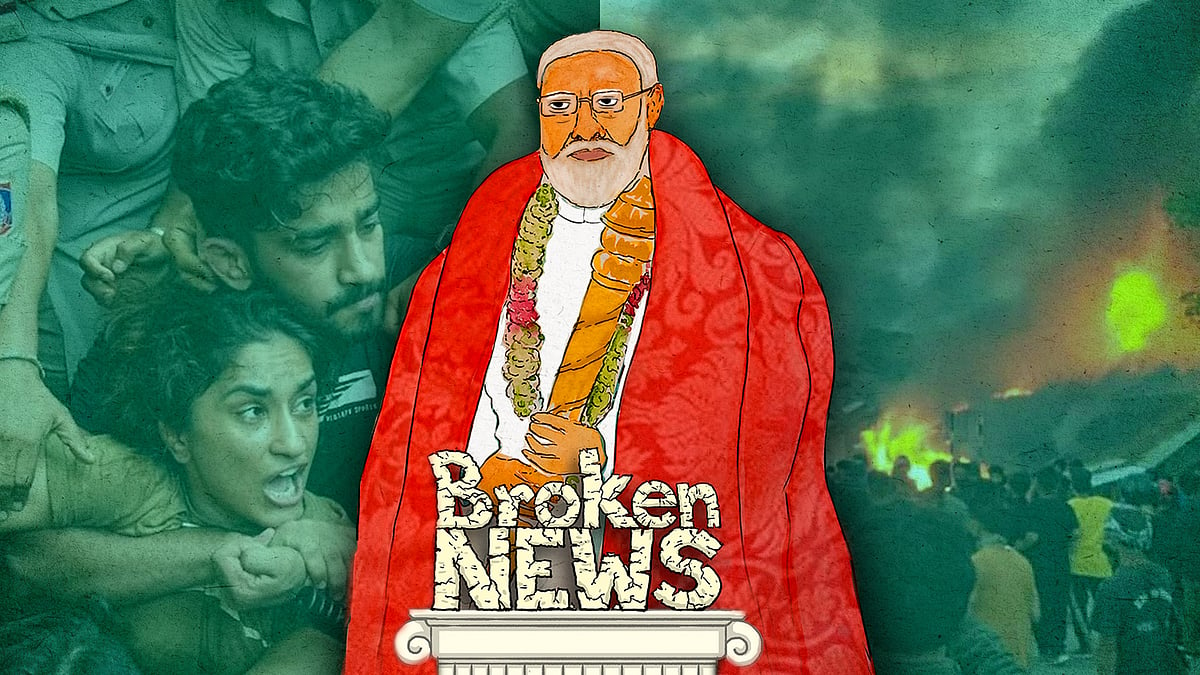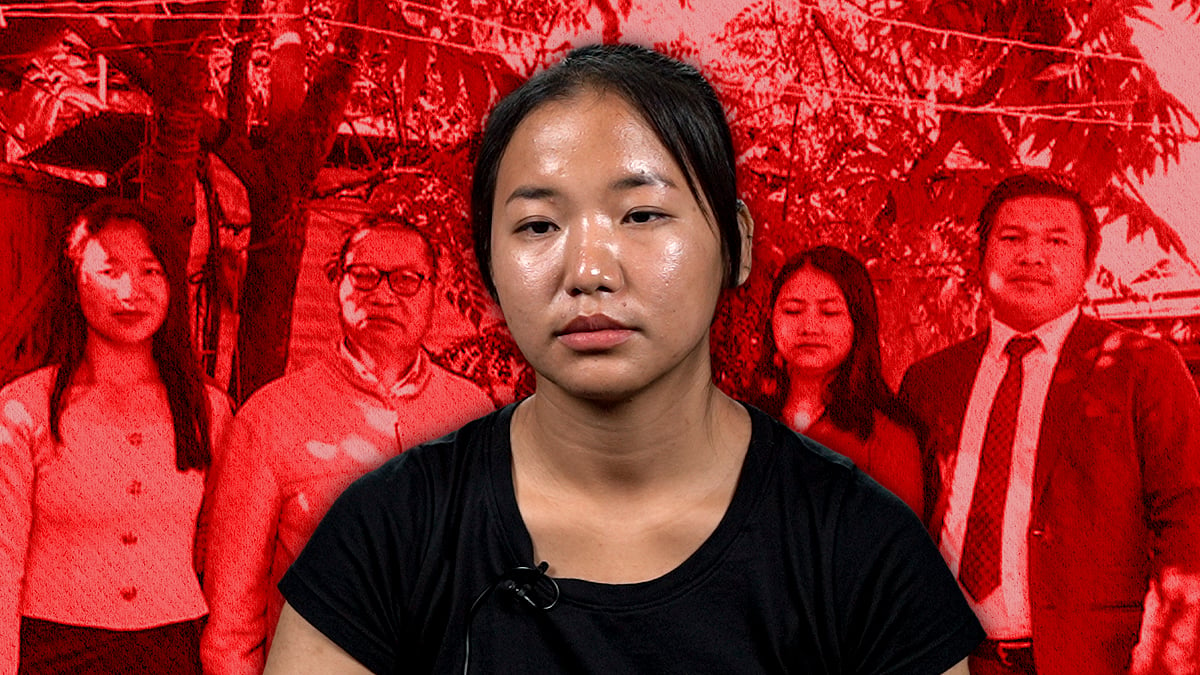‘A pen can do more harm than a gun’: In Manipur, Meitei-owned media is winning the ‘perception’ war
In Manipur’s major newspapers, attacks by ‘Kuki militants’ are top news, deepening the hills vs valley divide.
Henry Kaimuanthang said he used to have frequent run-ins with his editors over his stories being edited to give them a “communal angle”.
“I fought and persisted. Now editors have become sensitive. It’s better now,” said Kaimuanthang, who works as a freelancer in Manipur’s restive Churachandpur district. He contributes to the People’s Chronicle, a newspaper headquartered in Imphal, and Northeast Live, a TV channel in Guwahati.
But Henry’s is a common enough complaint now in the state.
With the epicentre of the ethnic conflict between Kukis and Meiteis shifting to the foothills and hilly regions of Manipur, a perception battle is being fought in the local media, deepening the divide between the hills and the valley. Most newspapers and TV channels are based in the valley – where Imphal is located – and owned by Meiteis.
Newslaundry spoke with editors and reporters of newspapers and digital outlets working in the Meitei-dominated valley and tribal-dominated hills to understand how they are walking a tightrope.
Tribal journalists, for instance, are sceptical of editors based in Imphal.
“They colour stories based on their whims and fancies. Stories are dropped with no rhyme or reason,” said one. They claimed that the coverage of the conflict has been heavily skewed in favour of the Meiteis.
In May, two tribal journalists in the hills quit their jobs at newspapers, fearing attacks if their stories were twisted to favour the other community. A few others from the hills told Newslaundry their stories are being relegated to fit smaller spaces.
However, as reported later in this story, the valley-based editors of three major newspapers in the state and the president of All Manipur Working Journalists Union said this is untrue.
Editorial positions in the valley
The media reports and editorials in Manipur’s three most-read English dailies in Manipur – the Sangai Express, Imphal Free Press and People’s Chronicle – lend credence to the apprehensions expressed by tribal journalists. All three papers are based in Imphal.
On Wednesday, for instance, the top story across the three papers was an attack by “Kuki militants” on security forces, leading to one death and two injuries. But the story of a mob burning alive a seven-year-old child and his mother did not make it to the three newspapers.
Sangai Express also published an editorial on June 5 that described the Meiteis, without explicitly naming them, as “the one who lords over the other in the valley area” while the Kukis were “gun toting, bandana clad highwaymen...who will open fire at the settlements at the foothills and burn down the houses and whatever little the villagers had stored up for the year.” The editorial accused 10 Kuki-Chin MLAs of emboldening the “hands of aliens”.
An editor with the paper, who did not wish to be named, justified the adjectives used for Kukis. “We stand by the editorial and it’s not that we have plucked it from the air,” he told Newslaundry.
The usage of “aliens” is not unusual – in April, during a protest led by Kukis, local news channel ISTV called the protesters “suspected illegal migrants” from Myanmar.
The Imphal Free Press in its June 2 editorial explained why the “general public” had purportedly looted 5,000 arms from the armouries of security forces in the wake of the violence. Some of the reasons stated in the editorial included disarming Meiteis of their gun licences, mistrust towards central forces, and the state government’s “indifference” towards giving arms permits.
“As the attacks by Kuki militants continued incessantly, the storming and looting of state armouries began in right earnest by the general public,” the editorial said.
Asked why the editorial justified looting of arms, Imphal Free Press editor-in-chief Irengbam Arun told Newslaundry: “There is no question of justification. We just pointed out facts as they are...Many SoO designated camps are nearby. Don’t villagers have the right to defend themselves?” Arun was previously a media advisor to chief minister Biren Singh.
SoO groups refer to more than two dozen Kuki militant organisations that have signed suspension of operations with the state and central governments. Under the agreement, the arms of these groups are kept at designated camps and monitored by security forces. The agreement is renewed every year depending on the progress made in peace talks.
The editorials in People’s Chronicle take a similar but less strident stance. In the initial days of the violence, it said hill-based organisations tend to play the victim card. In another editorial, the newspaper referred to speculation, “not without substance”, that there could be “tacit understanding between the central forces and Kuki militants”.
Ibo Singh, editor of People’s Chronicle, stood by the “victim card” editorial.
“Yes, they [Kukis] tried to paint Meiteis as perpetrators initially, which is not the case. The Kukis started the violence and the Meiteis retaliated,” he said.
When asked if the paper has dropped stories from reporters covering hilly areas, Singh said this is not the case. But he also called Arambai Tenggol, accused by Kukis of burning their villages, a “WhatsApp group”.
Fear of mob attack, backlash from own community
S Nengkhanlun, secretary general of the Manipur Hills Journalists’ Union and editor of Zogam Today, alleged that stories from the hills are being sidelined by Imphal-based media houses. “Two-three journalists have quit because of this. Valley papers don’t want to reveal the truth,” he claimed.
In a Facebook post, Zogam Today urged “media friends” not to allow “bias in reporting”.
But Bijoy Kakchingtabam, president of the All Manipur Working Journalists Union, insisted the media coverage was balanced and unbiased. “If hill journalists file stories, they are carried in the papers,” he said, adding that it was “dangerous” for journalists from one community to report from an area dominated by the other community.
The Sangai Express editor quoted above told Newslaundry that his Churachandpur journalist, who had worked with the paper for 17 years, quit immediately after the violence due to the “added burden” of the conflict. For reports from Churachandpur, he said, the newspaper now relies on the district information officer or their correspondent in Kangpokpi.
A hill journalist said they and others “feared that they would be attacked if their Imphal employers ran stories critical of Kukis.” Another alleged that his stories are junked regularly and they no longer file as many. “They are simply not accepting them,” they alleged, though the editors of Sangai Express and Imphal Free Press said this was untrue.
A senior journalist working for a digital news platform said the valley media is favourable to Meiteis due to their fears of attack and destruction of property.
“I have been challenged two times by people I know over our coverage. They alleged that we are pro-Kuki...What can people from other walks of life teach me how to do journalism?” the journalist said, observing that while the social media war has been won by Kukis, the local media coverage favours Meiteis.
An editor of Ukhrul Times, a three-year-old digital news platform owned by a Naga journalist, stressed that the local media is dominated and owned by Meiteis. “There is no prominent media house in the hills. The widely read newspapers and popular digital media outlets are based in Imphal.”
Another journalist underlined that all media houses in the state have to exercise restraint and tell the truth.
Safety and ethics
Media houses have also taken down stories over threats and fear of outraging one community. On May 24, East Mojo published a story on four Naga women being beaten up and abused in Imphal. East Mojo took it down, but Ukhrul Times stood by their story on the same issue.
A senior editor with East Mojo, who wanted to remain anonymous, said the story was taken down as it could have led to escalation in violence, and more law and order issues. In addition, Newslaundry learnt that the reporter received threat calls from Meitei groups after the story went online – though the editor said this wasn’t the case.
The digital news media’s editor-in-chief Karma Paljor refused to comment on the Naga women story, but said that the national media should visit Manipur and have assets in every district for fact-finding on the authenticity of news reports. “They should not then rely on local journalists.”
On May 29, a first-person account by Afrida Hussain, India Today’s Northeast bureau chief, was taken down after she was allegedly threatened by “mobs” at her hotel. The story, on the fight between security forces and Arambai Tenggol, a Meitei group, was re-published on the channel’s website after Hussain was safely escorted out of her hotel.
A hill journalist told Newslaundry that media houses aren’t complying with the Press Council of India’s code of ethics of not naming communities during unrest. Only one media house, Frontier Manipur, has recently stopped naming these communities, the journalist said.
Paojel Chaoba, executive editor of Frontier Manipur, told Newslaundry that during riots or clashes, a journalist will never get the other side of the story.
“It’s better to not name the communities to ensure that the situation does not worsen. A pen can do more harm to people than a gun,” he said, adding that he has several human-interest stories from both the communities living together. “But the moment I publish them, rioters will attack these oases of friendships too. So, we have to weigh what we write.”
Another tribal journalist working for an Imphal-based media house said he feels “helpless” and abandoned by his community.
“After the violence began, three journalist unions from the valley, hills and Delhi issued a joint press statement, saying that the reportage should maintain journalistic ethics,” the journalist said. “I have reported objectively. But objectivity also has a price. I have faced a lot of pressure from my community, saying that I am of no use to them...On the other hand, Imphal-based media houses and journalists are distorting facts and running misleading stories that are picked up by local TV channels too. My employer wants me to write stories only about relief camps when there is a lot of firefighting...”
He added, “We don’t have any platform. Just like the state government, journalists have also failed in performing their duty.”
 Manipur simmers, champions protest, but Modi's focus is on his new Parliament
Manipur simmers, champions protest, but Modi's focus is on his new Parliament ‘Can still feel the blows...Imphal murdered my family’: Manipur violence survivor recalls escape
‘Can still feel the blows...Imphal murdered my family’: Manipur violence survivor recalls escape 